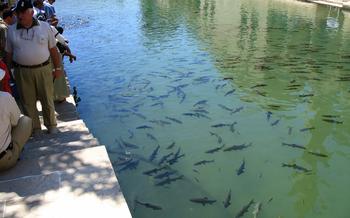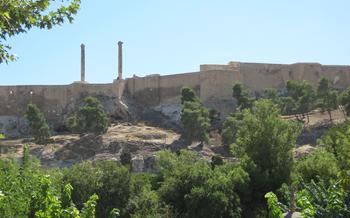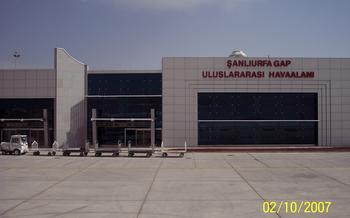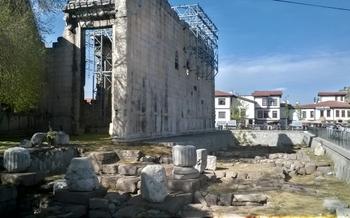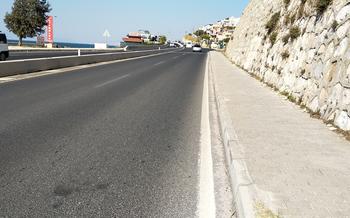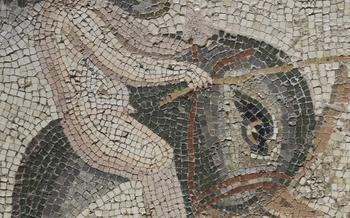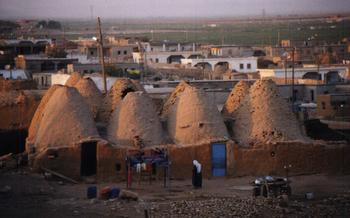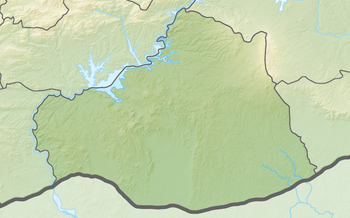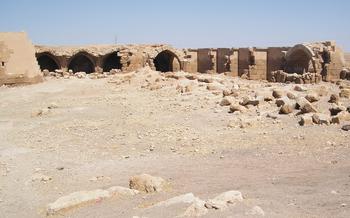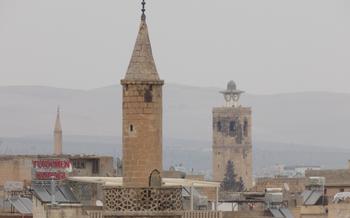
Kızılkoyun Roman Tombs
- History of the Kızılkoyun Roman Tombs
- Location and Accessibility
- Architectural Wonders
- Exploring the Interiors
- Historical Importance
- Contribution to Tourism
- Artistic Depictions and Representations
- Conservation and Preservation Efforts
- Future Plans and Developments
- Personal Anecdotes and Experiences
- Virtual Tours and Online Resources
- Photography and Social Media
- Insider Tip:
History of the Kızılkoyun Roman Tombs
The ancient city of Edessa, known today as Şanlıurfa, has a rich and diverse history dating back to ancient times. During the Roman period, Edessa played a significant role as a vital trade center and military outpost on the eastern frontier of the empire. It was during this period that the impressive Kızılkoyun Roman Tombs were constructed, showcasing the architectural prowess and funerary practices of the Romans.
The tombs were built in the 2nd century AD and are believed to have been used by wealthy and influential families of the city. Their unique design and intricate carvings set them apart from other Roman tombs and provide valuable insights into the artistic and cultural traditions of the era.
The tombs remained hidden for centuries until their rediscovery in the 19th century by a group of European explorers. The discovery sparked great interest in the history of Edessa and led to further excavations and research that revealed the tombs' significance as an important archaeological site.
These rock-cut tombs are exceptional examples of Roman funerary architecture, featuring arched entrances, intricate carvings, and decorative motifs. Their unique construction and well-preserved condition make them a valuable resource for understanding the burial customs and beliefs of the Roman Empire.
Location and Accessibility
The Kızılkoyun Roman Tombs are situated approximately 10 kilometers southwest of Şanlıurfa city center, making them easily accessible for visitors. To reach the tombs, you can take a short taxi ride or drive your own vehicle. The journey takes around 15-20 minutes, and the tombs are well-signposted from the main road.
Once you arrive, you'll find ample parking space available near the entrance. The tombs are conveniently located near other popular tourist attractions in Şanlıurfa, such as the Şanlıurfa Museum. This makes it easy to combine a visit to the tombs with other sightseeing activities in the city.
Whether you choose to travel by private or public transportation, getting to the Kızılkoyun Roman Tombs is straightforward. Public buses run regularly from the city center to the tombs, and the bus stop is just a short walk from the entrance.
When planning your visit, allocate at least an hour to fully explore the tombs and appreciate their unique features. This will give you enough time to wander through the chambers, admire the intricate carvings, and soak in the historical atmosphere of this fascinating site.
Architectural Wonders
The Kızılkoyun Roman Tombs are remarkable for their distinctive architectural features, showcasing the artistry and craftsmanship of the Roman era. The arched entrances, intricately carved pediments, and decorative friezes add to their grandeur. Symbolism and religious motifs are depicted in the iconography, offering insights into the beliefs and worldview of the ancient Romans. These tombs are comparable to other Roman tombs found across the empire, yet they retain their unique character and exemplify the evolution of Roman funerary architecture over time. The attention to detail and masterful construction techniques employed in these tombs are a testament to the skill and dedication of the Roman builders.
Exploring the Interiors
Venturing into the Kızılkoyun Roman Tombs is a journey through time, revealing the secrets of ancient burial practices. The interiors consist of burial chambers arranged in a cruciform layout, each echoing the architectural grandeur of the exteriors. These chambers served as the final resting places for prominent individuals of Edessa's Roman era.
As you step inside, the cool air and hushed silence envelop you, creating an atmosphere of solemnity and reverence. The walls are adorned with intricate carvings and niches, each telling a story of the deceased's life and beliefs. These niches once held funerary objects, offerings to accompany the departed on their journey to the afterlife.
The burial chambers are interconnected by narrow passageways, leading you deeper into the tomb's labyrinthine depths. The air is thick with history, whispering tales of lives long past. As you explore, imagine the mourners who gathered here, their grief etched on their faces as they bid farewell to their loved ones.
The tombs' layout reflects the Roman belief in the afterlife. The central chamber, with its domed ceiling, represents the celestial realm, while the surrounding chambers symbolize the earthly world. This architectural symbolism adds a layer of depth and meaning to the site, inviting visitors to contemplate the ancient Roman worldview.
Exploring the interiors of the Kızılkoyun Roman Tombs is a profound experience, connecting you with the past and offering a glimpse into the lives and beliefs of the Romans who once called Edessa home.
Historical Importance
The Kızılkoyun Roman Tombs are not merely architectural wonders but also hold immense historical significance. They offer a glimpse into the rich past of Edessa and provide valuable insights into the Roman era. These tombs serve as tangible evidence of Roman funerary practices and beliefs, shedding light on the social and cultural life of that period. By studying the tombs, we gain a deeper understanding of the continuity and evolution of burial traditions from ancient to modern times. They represent a vital chapter in the history of Şanlıurfa and contribute to our knowledge of the region's rich cultural heritage.
Contribution to Tourism
The Kızılkoyun Roman Tombs have emerged as a valuable tourist attraction in Şanlıurfa, drawing visitors from around the world. Their unique architectural features, historical significance, and captivating atmosphere make them a must-visit destination for travelers interested in ancient history and cultural heritage.
The presence of the tombs has significantly contributed to the local economy by generating tourism revenue. As visitors flock to see these magnificent structures, they contribute to the growth of the hospitality industry, benefiting hotels, restaurants, and tour operators in the region.
Furthermore, the tombs play a vital role in promoting Şanlıurfa's cultural heritage. They serve as a testament to the city's rich past and provide a glimpse into the lives and beliefs of the ancient Romans who once inhabited this region. By preserving and promoting this historical site, Şanlıurfa can attract history enthusiasts and cultural tourists, further enhancing its position as a vibrant and culturally significant destination.
In addition to their economic and cultural benefits, the tombs also contribute to the promotion of sustainable tourism practices. By encouraging visitors to explore and appreciate the site's historical significance, the local authorities are able to raise awareness about the importance of preserving cultural heritage while also generating income that can be reinvested into the maintenance and protection of the tombs.
Artistic Depictions and Representations
The Kızılkoyun Roman Tombs have been immortalized through various artistic mediums, capturing their grandeur and evocative atmosphere. Paintings, drawings, and photographs have played a significant role in documenting the site's evolution and preserving its memory for future generations.
Artists have been drawn to the tombs' unique architectural features and intricate carvings, finding inspiration in their timeless beauty. Paintings and sketches often depict the tombs' imposing facades, with their arched entrances and elaborate ornamentation. Detailed drawings capture the intricate carvings that adorn the tombs' interiors, revealing hidden symbols and motifs.
Photography has become a powerful tool for showcasing the tombs' visual splendor. Photographs capture the interplay of light and shadow within the chambers, creating a sense of depth and mystery. Through the lens of a camera, visitors can appreciate the tombs' grandeur from various angles and perspectives.
The artistic representations of the Kızılkoyun Roman Tombs have not only documented their physical appearance but have also contributed to their mystique and allure. These artworks serve as a testament to the enduring legacy of these ancient structures, ensuring their place in the annals of history and art.
Conservation and Preservation Efforts
The Kızılkoyun Roman Tombs have stood the test of time, but they are not immune to the ravages of natural elements and human impact. Ongoing conservation and preservation efforts aim to protect and maintain the integrity of this ancient site. Local authorities and international organizations collaborate to ensure the longevity of the tombs through sustainable practices.
One of the key challenges in preserving the tombs is balancing accessibility with protection. While tourism brings economic benefits and raises awareness, it also increases foot traffic and potential damage to the delicate structures. Limited access and controlled visitation are implemented to minimize wear and tear while allowing visitors to appreciate the site's beauty.
Restoration efforts focus on preserving the architectural features and preventing further deterioration. Skilled artisans and conservators use traditional techniques and materials to repair damaged elements and reinforce weakened structures. This delicate work ensures the tombs remain a testament to Roman craftsmanship for generations to come.
Research and documentation play a crucial role in conservation efforts. Archaeological surveys, 3D scanning, and historical studies help experts understand the tombs' construction, use, and significance. This knowledge guides conservation decisions and helps preserve the site's authenticity.
By prioritizing conservation and preservation, we can ensure the Kızılkoyun Roman Tombs continue to inspire and educate visitors for centuries to come. These ancient structures stand as a testament to the enduring legacy of Roman civilization, and their preservation is a shared responsibility among historians, archaeologists, and travelers alike.
Future Plans and Developments
With their historical significance and unique architectural features, the Kızılkoyun Roman Tombs hold immense potential for further development and exploration. Plans are underway to enhance the site's accessibility and visitor experience while preserving its historical integrity.
The local authorities, in collaboration with international organizations, are committed to the site's long-term preservation. Ongoing restoration projects aim to stabilize the structures and prevent further deterioration. Archaeological excavations are also planned to uncover additional tombs and shed more light on the lives and customs of the Roman inhabitants.
Furthermore, there are initiatives to develop a comprehensive cultural heritage circuit that includes the tombs and other notable sites in the region. This would encourage visitors to delve deeper into the rich history and diverse attractions of Şanlıurfa. By integrating the tombs into a broader network of cultural experiences, the site's significance would be amplified, attracting more visitors and fostering a deeper appreciation for Turkey's ancient heritage.
These plans and developments hold exciting prospects for the future of the Kızılkoyun Roman Tombs. They promise to enhance the site's accessibility, preserve its historical value, and create a more immersive and engaging experience for visitors from around the world.
Personal Anecdotes and Experiences
My visit to the Kızılkoyun Roman Tombs was an awe-inspiring experience that left an indelible mark on my memory. As I explored the intricate carvings and stepped into the dimly lit burial chambers, I couldn't help but feel a sense of wonder and reverence for the ancient civilization that had created this remarkable site.
One particularly memorable moment was when I encountered a local guide who shared fascinating stories and legends passed down through generations. He described how the tombs were believed to be the resting place of important Roman figures, and that their spirits still lingered within the walls.
As I continued to explore, I couldn't shake the feeling of being connected to the past. The tombs seemed to whisper secrets of a bygone era, and I felt a deep appreciation for the history and culture that they represented.
Leaving the tombs, I carried with me a newfound respect for the ancient Roman civilization and a sense of awe for the enduring legacy of their empire. The experience had ignited a passion within me to explore more of Turkey's rich history and cultural treasures.
Virtual Tours and Online Resources
While not everyone has the opportunity to travel to Şanlıurfa and experience the Kızılkoyun Roman Tombs in person, there are various virtual tours and online resources that offer a glimpse into their history and significance. These platforms allow you to explore the tombs remotely, providing a virtual journey through the ancient chambers and intricate carvings.
Interactive 3D models and panoramic images offer an immersive experience, allowing you to navigate the site as if you were there. Historical information, research findings, and expert commentary accompany these virtual tours, providing a deeper understanding of the tombs and their context.
By leveraging technology, these online resources make the Kızılkoyun Roman Tombs accessible to a global audience, fostering a sense of wonder and curiosity among those unable to visit in person. They serve as valuable tools for education, research, and cultural appreciation, extending the reach and impact of this remarkable site.
Photography and Social Media
With their captivating beauty and historical significance, the Kızılkoyun Roman Tombs are a treasure trove for photography enthusiasts. Capture the intricate carvings, imposing arches, and atmospheric interiors, ensuring to respect the sanctity of the site. Share your experiences on social media using relevant hashtags to connect with a global audience of history buffs and travel enthusiasts. By doing so, you not only document your visit but also contribute to promoting this hidden gem and its rich heritage. Join the online community and showcase the wonders of the Kızılkoyun Roman Tombs to the world.
Insider Tip:
For an unforgettable experience, venture beyond the main chambers of the tombs and explore the hidden corners that reveal captivating perspectives. One such spot is a secluded chamber tucked away from the main path, where intricate carvings and faded inscriptions whisper tales of the past. Time your visit to coincide with the golden hour just before sunset, when the soft light casts an ethereal glow on the stone, amplifying the tombs' mystique. Combine your visit to the tombs with a culinary journey at one of the local restaurants, where you can savor authentic Turkish delights and immerse yourself in the region's rich culinary traditions.
